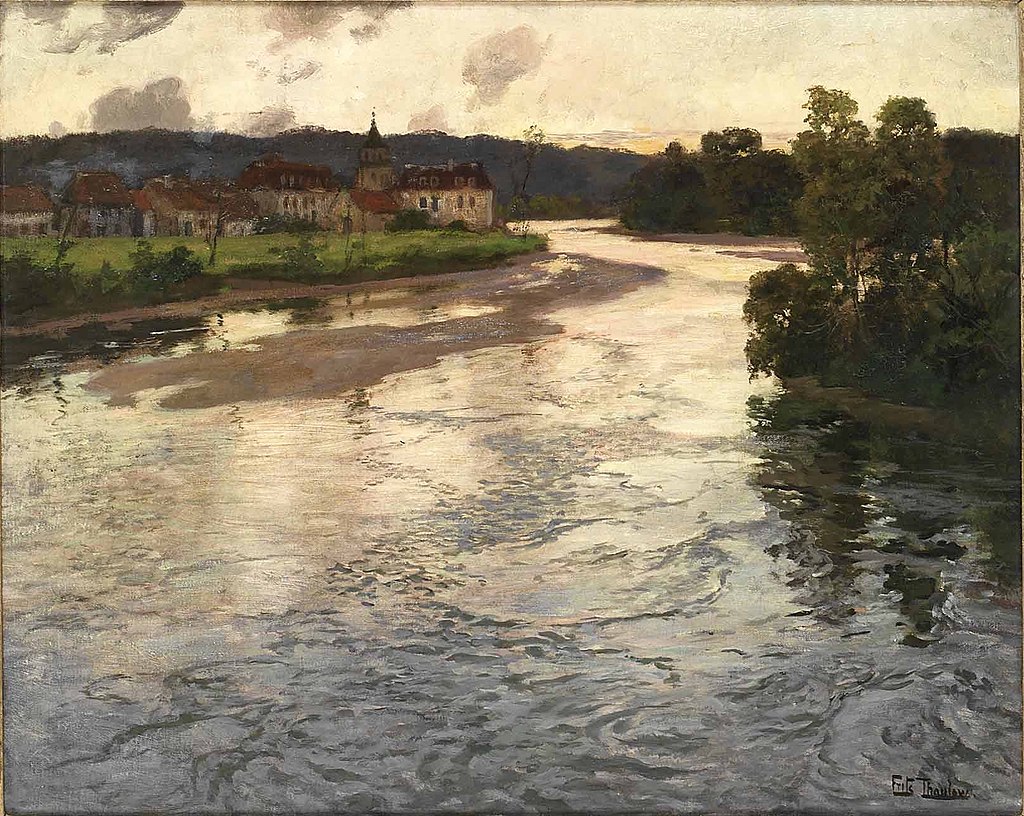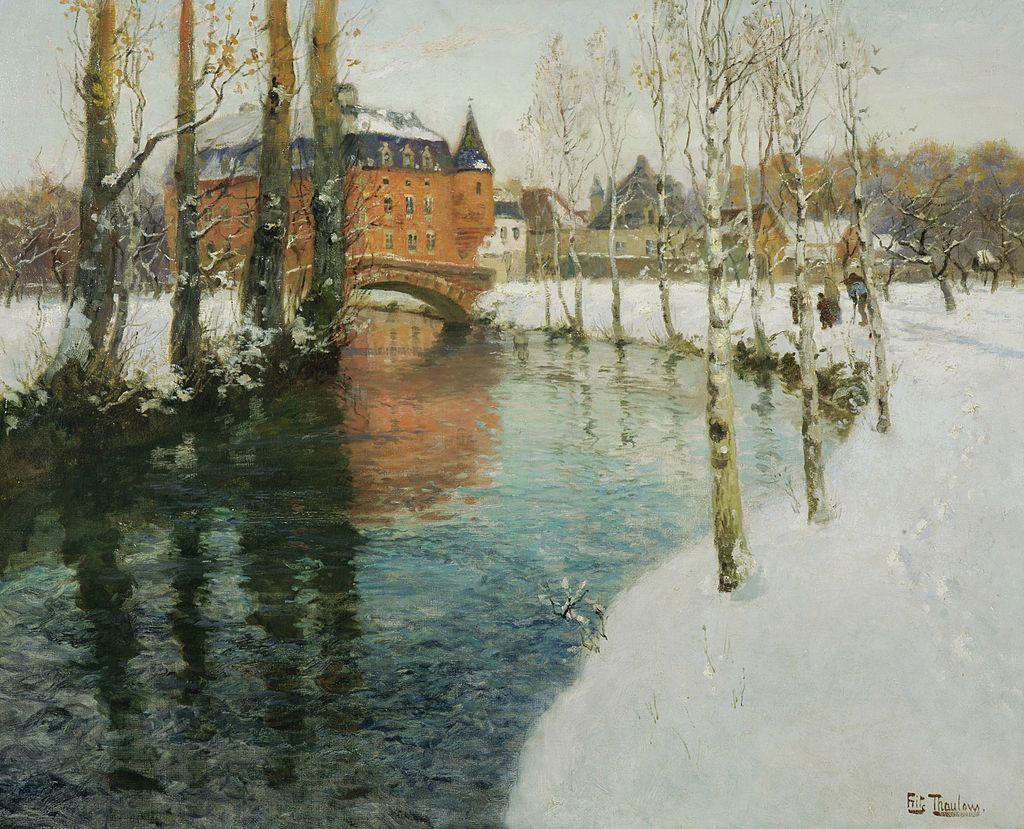Ponte Pietra, Verona 1894
Frits Thaulow was born on October 20 1847 in Oslo (formerly Christiania), Norway. A member of the Skagen Painters, Thaulow studied in Copenhagen and under Hans Gude. Thaulow painted in Skagen for a few years before returning to Norway and finally moving to northern France where he found inspiration in the idyllic views there where he would explore tonalist Impressionism and a vibrant palette. Thaulow is one of the most underrated of Impressionist painters in his distinctive sense of color and light in his water reflections. He is more naturalist than Impressionist. His paintings immerse us into his world.
In Ponte Pietra, Verona above Thaulow contrasts a rustic, ancient Roman bridge made of brick and travertine with the beautiful green tones in the water. This is a view from the right which is not often depicted in photos even today, and yet this has a freshness that makes us feel like we are standing at the very spot. Thaulow's muted brushwork in the water conveys the movement of the Adige River with a faint mottled reflection of the bridge to help convey the current. I love how Thaulow conveys the texture and age of the bridge with dark, scumbled marks and deep shadows under the arches, and yet suggesting the more modern homes on the other side.
detail
Notice the transparent violet shadow he adds that gives a sense of depth to the painting and reinforces the direction of sunlight.

Landscape. 1903
Thaulow conveys a serene moment without any artifice or cliche. Thick, opaque highlights of scumbled greys create reflections of water so natural it seems palpable. The composition is neatly divided in half although in perspective, and yet it contrasts so well the rugged shoreline with this pristine river. The warm leaves of the tree infer autumn and although this is not a high-res image, we can see how Thaulow uses a fun impasto on these leaves to convey their texture contrasting with the distant lining the opposite bank in the distance. I have never seen an artist pay such close attention to reflections as Thaulow, and here these trees vibrate gently in the swaying current of the water. There is such immediacy in this study, and so much we can learn about en plein air painting from this. Magic.

The river La Dordogne in France, 1903
This is a view from the Southwestern region of France known for lush verdant landscapes. Once again, Thaulow hones in on the magic quality of the river. He takes the faint last glow of an early evening sky and reflects it in the water from an unusually high point of view for a landscape, maybe looking down from a small hill or higher bank. The sky is a dull yellow grey that works flawlessly and Thaulow indicates clouds with a few dark grey strokes. He uses very cool greys on the waves of the water in the foreground, nearly blue...look at the reflection of the tree in the right hand side of the composition. Thaulow reminds us that the view need not be grandiose or intricately composed—it is the emotion, the mood, the feeling...the moment conveyed is all that matters.

A Streetlight in Moonlight, 1895 (pastel)
This eerie piece somehow seems to be channeling Van Gogh. Thaulow does this one in pastel,which lends to its mysterious textures. More like something out of a dream than a painting, here Thaulow lures us into a nocturnal fantasy of surreal familiarity. That sky feels like nighttime. And the soft grey shadows of the entrance to the church on the left contrasts with the craggy trees off to the right. There is minimal, if any blending at all here and yet in spite of the rough textures one forgets that they are looking at a painting. Nocturnes are an artform unto themselves.

A Château in Normandy, ca.1895
Love the composition and the way the river leads our eye gently to the chateau in the distance. Curiously, Thaulow reverses the atmospheric color perspective by making the chateau warm and the water cool and yet it works brilliantly. This is impressionist painting yet Thaulow takes deliberate care in the reflections and undulations of the water...I really believe if Monet knew Thaulow he would have greatly admired him. Look at the detail below:
Impressionism is not quick brushstrokes. Look at how Thaulow thins the paint with solvent to retain transparency while keeping his highlights vibrant and crisp. He is a painter's painter who definitely was aware of each particular stroke, each value relationship and temperature, standing both up close and far back from his work to judge his accuracy. Note how the snow off to the right is a dull, blue grey value that would probably look wrong mixed on a palette yet it looks exactly like snow. This kind of painting is alive and invigorating.
Thaulow is a highly underrated Impressionist Master that inspires one to brave the elements and tackle the land around us. The camera in all of its seeming perfection and mechanical reproduction cannot ever produce work like this, fresh and personal, to say the least of AI and its digital artistic terrorism. Landscape painting requires true observation and a love of and respect for nature that can only be achieved on location.



Comments
Post a Comment